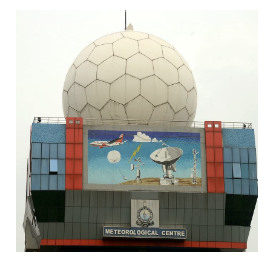Working of Radar: - Radar is short for ‘radio detection and ranging’. It uses radio waves to determine the distance, velocity, and physical characteristics of objects around the device.
- A transmitter emits a signal aimed at an object whose characteristics are to be ascertained (in meteorology, this could be a cloud).
- A part of the emitted signal is echoed by the object back to the device, where a receiver tracks and analyzes it.
- Weather radar, also known as a Doppler radar, is a common application of this device. The Doppler effect is the change in frequency of sound waves as their source moves towards and away from a listener.
- In meteorology, Doppler radars can reveal how fast a cloud is moving and in which direction based on how the cloud’s relative motion changes the frequency of the radiation striking it. Doppler radar relies on Rayleigh scattering, when the scatterer is much smaller than the wavelength of the radiation.
- A pulse-Doppler radar can measure the intensity of, say, rainfall by emitting radiation in pulses and tracking how often they’re reflected to the receiver. This way, modern Doppler radars can monitor weather conditions and anticipate new wind patterns, the formation of storms, etc.
|

